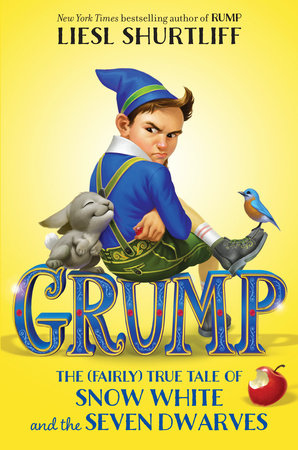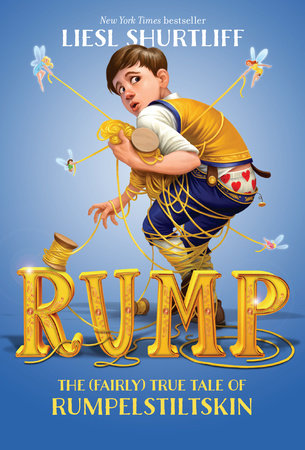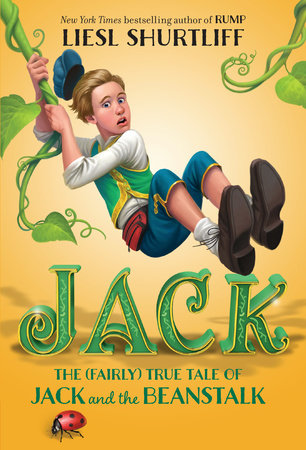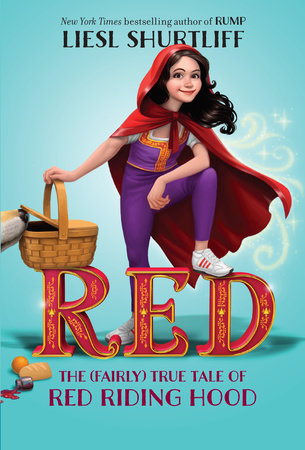On Taking Fairy Tales Seriously
by Liesl Shurtliff
Liesl Shurtliff is the author of Brightly’s Book Club for Kids pick Red. Click here to learn more about the book, discover activities and tips for discussion inspired by Red, and join in on the reading fun.
When I first started writing, I thought I’d write realistic, contemporary fiction — “serious books” about real things that happen to real people. Wanting the world to take me seriously as a writer, I shoved aside any whims of magic or even much humor. But one day an idea came to me while I was running, as so many ideas often do: What if there was a world where names were so powerful, they determined your destiny? My mind instantly went to Rumpelstiltskin, one of my favorite childhood fairy tales, and the seeds of my first novel, Rump, were planted. As I developed that world and story, more fairy tales cropped up, which inspired me to write humorous retellings ofJack and the Beanstalk and Little Red Riding Hood. So much for serious!
In hindsight it seems completely natural that I should choose to write fairy tales. I loved fairy tales as a child. I was surrounded by them in music, dance, theater, films, paintings, and books. My pretend play often had some fairy tale element — princesses in ball gowns, magic, evil stepmothers, and dragons. They’re powerful stories and we find evidence of their influence threaded throughout our culture and ways of thinking, both conscious and unconscious. But why, if I love these stories so much, would I endeavor to change them?
Most fairy tales themselves have no original author, but were passed down for centuries through oral tradition until scholars like the Grimms, Jacobs, and Perrault thought it worthwhile to collect and record them, to preserve a portion of their cultural heritage. There are many versions of the tales. At least 58 “original” versions of Little Red Riding Hood exist from various regions of the world, many of which predate the Grimms’. With so many different versions in existence, the stories lend themselves well to varied interpretations. It’s almost as if they were meant to be retold in different ways, to better reflect current cultural norms and beliefs — or to challenge them.
[RELATED: 6 Fractured Fairy Tales for Tweens]
When I choose to retell a fairy tale, I usually approach it by looking at various versions of the “original” and start poking and prodding, asking questions. For Little Red Riding Hood I wondered why this little girl would talk to a wolf. How does she talk to him? Why wouldn’t she immediately recognize that her granny is actually the wolf in her granny’s nightgown? Is she dim-witted or just farsighted? With every event in the story, I’m always asking why and how and what if? What is the character’s motivation? What is their history? What do they fear? What makes them tick? Could their behavior seem different if looked at from another angle or given another explanation? I search for answers that are less obvious, usually discarding the first, second, even third idea that comes to mind. The ideas that come to us first are usually the clichés. I want to tell the story in a way that hasn’t been done before, holding true to the story’s general essence while turning it on its head.
With Red this was a little trickier, because Little Red Riding Hood has been done so many times in so many ways. Werewolf themes have been done to death, and I didn’t build a world that supports anthropomorphism. Red’s character was also difficult to tease out. Red Riding Hood is often seen as a symbol of female sexuality, and so many versions play to extremes of her character. Either she’s a sexy, badass wolf hunter, or a silly, naive little girl, unable to see a predator even when she’s talking to it. These extremes can be really fun and exciting, but neither was completely satisfying to me. I thought to myself, “Perhaps a mixture of both could work?”
My Red is very aware (perhaps too aware) of the dangers in the world. She’s fierce and protective, but still vulnerable and naïve about some of life’s most important truths, which is precisely what gets her into trouble. I see a great deal of myself in her. I see pieces of myself in almost all my characters, but I often say Red is the character most like me, which is why writing Red felt like such a journey of self-discovery. Every time I write a story, I discover new windows to my soul.
Retelling a fairy tale is a process of deconstruction, followed by the slow laborious process of putting it all back together. It can be difficult to make all the pieces work harmoniously. Sometimes you’ll pull everything together only to find you’ve left out a vital piece, and have to rip it open at the seams again. But that’s also part of the fun! The challenge makes the accomplishment all the more satisfying. It’s one of the reasons I love fairy tales: They might seem like simple stories on the outside, but dig a little and you’ll realize they have hidden oceans of meaning, caves and valleys, impossible mountains and twisting rivers. They’re feathers and glass slippers one moment, fangs and talons the next.
Perhaps I came round to writing serious book after all.
-
By the Author:
-
Rump: The True Story of Rumpelstiltskin
Also available from:Red: The True Story of Red Riding Hood
Also available from:




